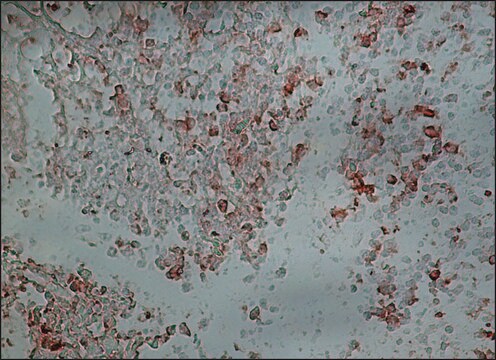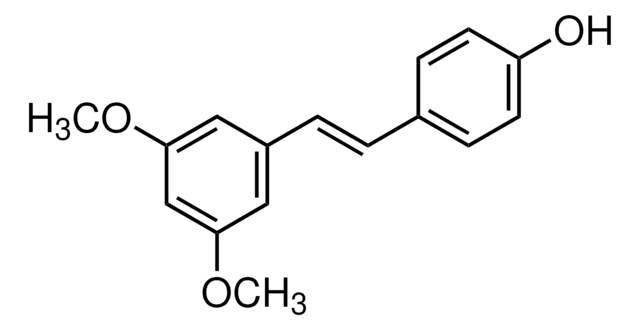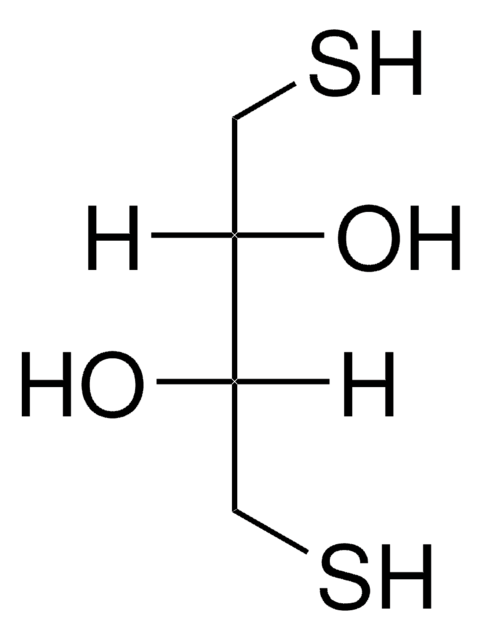F6261
Anti-Guinea Pig IgG (whole molecule)−FITC antibody produced in goat
affinity isolated antibody, buffered aqueous solution
Sinónimos:
Goat Anti-Guinea Pig IgG (whole molecule)−Fluorescein isothiocyanate
Iniciar sesiónpara Ver la Fijación de precios por contrato y de la organización
About This Item
Productos recomendados
origen biológico
goat
conjugado
FITC conjugate
forma del anticuerpo
affinity isolated antibody
tipo de anticuerpo
secondary antibodies
clon
polyclonal
Formulario
buffered aqueous solution
técnicas
direct immunofluorescence: 1:64
temp. de almacenamiento
2-8°C
modificación del objetivo postraduccional
unmodified
Descripción general
Goat polyclonal anti-Guinea Pig IgG (whole molecule)−FITC antibody reacts with guinea pig IgG (whole molecule). Identity and purity of the antibody is established by immunoelectrophoresis (IEP), prior to conjugation. Electrophoresis of the antibody preparation followed by diffusion versus anti-goat IgG and anti-goat whole serum results in single arcs of precipitation.
IgG antibody subtype is the most abundant serum immunoglobulins of the immune system. It is secreted by B cells and is found in blood and extracellular fluids and provides protection from infections caused by bacteria, fungi and viruses. Maternal IgG is transferred to fetus through the placenta that is vital for immune defence of the neonate against infections.
Anti-Guinea Pig IgG (whole molecule)-FITC antibody is specific for guinea pig IgG subclasses. Goat anti-Mouse IgG is purified by affinity isolation and conjugated to FITC.
Anti-Guinea Pig IgG (whole molecule)-FITC antibody is specific for guinea pig IgG subclasses. Goat anti-Mouse IgG is purified by affinity isolation and conjugated to FITC.
Second antibodies (secondary antibodies) are antibodies raised against other antibodies, typically from another species, called primary antibodies. Primary antibodies are generated with and bind to specific antigens to create antigen antibody complexes which may be detected in a variety of immunochemical and immunohistochemical configurations involving soluble or insoluble signaling molecules. The immunodetection system depends upon the binding of a signal competent secondary antibody to a primary antibody:antigen complex.
The suitability of any secondary antibody to a specific immunodetection application is dependent upon its signal development system configuration. Signal development systems are based upon the chemical conjugation of a signal mediator to the secondary antibody. Major secondary antibody signal systems are color (chromogenic), chemiluminescence or fluorescence based and involve the use of enzymes or high affinity binary systems such as biotin:avidin.
Fluorescein isothiocyanate (FITC) is a fluorescein derivative (fluorochrome) used to tag antibodies, including secondary antibodies, for use in fluorescence-based assays and procedures. FITC excites at 495 nm and emits at 521 nm.
The suitability of any secondary antibody to a specific immunodetection application is dependent upon its signal development system configuration. Signal development systems are based upon the chemical conjugation of a signal mediator to the secondary antibody. Major secondary antibody signal systems are color (chromogenic), chemiluminescence or fluorescence based and involve the use of enzymes or high affinity binary systems such as biotin:avidin.
Fluorescein isothiocyanate (FITC) is a fluorescein derivative (fluorochrome) used to tag antibodies, including secondary antibodies, for use in fluorescence-based assays and procedures. FITC excites at 495 nm and emits at 521 nm.
Inmunógeno
Purified guinea pig IgG
Aplicación
Anti-guinea pig IgG (whole molecule)-FITC antibody may be used for immunofluorescence of guinea pig spleen cells at a minimum dilution of 1:64. Antibody concentrations ranging from 1:80-1:100 were used for immunofluorescence in various studies. Guinea pig IgG was used as secondary antibody to quantitate fluorescence by photon counting using a Leitz MPV Compact 2 microscope photometer.
Goat polyclonal anti-Guinea Pig IgG (whole molecule)−FITC antibody may be used as a secondary antibody or to detect the presence of guinea pig IgG via fluorogenic immunochemical or immunohistochemical techniques.
Forma física
Solution in 0.01 M phosphate buffered saline, pH 7.4, containing 1% bovine serum albumin and 15 mM sodium azide
Cláusula de descargo de responsabilidad
Unless otherwise stated in our catalog or other company documentation accompanying the product(s), our products are intended for research use only and are not to be used for any other purpose, which includes but is not limited to, unauthorized commercial uses, in vitro diagnostic uses, ex vivo or in vivo therapeutic uses or any type of consumption or application to humans or animals.
¿No encuentra el producto adecuado?
Pruebe nuestro Herramienta de selección de productos.
Código de clase de almacenamiento
10 - Combustible liquids
Clase de riesgo para el agua (WGK)
WGK 2
Punto de inflamabilidad (°F)
Not applicable
Punto de inflamabilidad (°C)
Not applicable
Elija entre una de las versiones más recientes:
¿Ya tiene este producto?
Encuentre la documentación para los productos que ha comprado recientemente en la Biblioteca de documentos.
Stage-specific surface antigens of the cattle lungworm Dictyocaulus viviparus
Britton C et al
Pediatrics International : Official Journal of the Japan Pediatric Society, 15, 625-634 (1993)
Kai Mi et al.
PloS one, 12(2), e0172156-e0172156 (2017-02-17)
The strategies for developing rotavirus (RV) vaccines have always been controversial. At present, both the monovalent RV vaccine and the multivalent RV vaccine have displayed excellent safety and efficacy against RV infection and shown cross-reactive immunity, which laid the question
L Ny et al.
British journal of pharmacology, 118(2), 392-399 (1996-05-01)
1. In the feline lower oesophageal sphincter (LOS), the distribution of the carbon monoxide (CO) producing enzymes haem oxygenase (HO)-1 and -2 was studied by immunohistochemistry and confocal microscopy, the HO activity was measured and the possible role for CO
Helen Brosi et al.
Journal of immunology (Baltimore, Md. : 1950), 183(11), 7187-7195 (2009-11-06)
RIP-B7.1 mice express the costimulator molecule B7.1 (CD80) on pancreatic beta cells and are a well-established model for studying de novo induction of diabetogenic CD8 T cells. Immunization of RIP-B7.1 mice with preproinsulin (ppins)-encoding plasmid DNA efficiently induces experimental autoimmune
L Ny et al.
British journal of pharmacology, 116(7), 2873-2880 (1995-12-01)
1. The localization, tissue concentrations, and effects of pituitary adenylate cyclase activating peptide (PACAP) 27 and 38 were investigated in cat and human lower oesophageal sphincter (LOS), and compared with those of vasoactive intestinal peptide (VIP) and helospectin. 2. PACAP-immunoreactive
Nuestro equipo de científicos tiene experiencia en todas las áreas de investigación: Ciencias de la vida, Ciencia de los materiales, Síntesis química, Cromatografía, Analítica y muchas otras.
Póngase en contacto con el Servicio técnico








